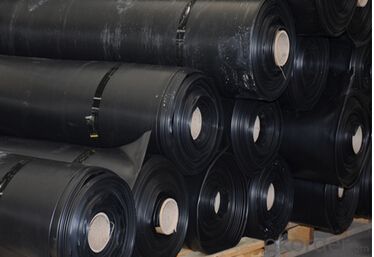- Understanding the Role of Geomembrane Liners in Waste Management
- Innovations in Geomembrane Liners for Water Management
- Geomembrane Liners: A Comprehensive Guide
- The Future of Geomembrane Liners in Civil Engineering
- Geomembrane Liners: Enhancing Landfill Stability
Manager:
WhatsApp:+86 177 0135 2670
Tel:+86 177 0135 2670
Email:marketing@okorder.com
Address:3rd Floor, No.2 Building, No.1 Sanlihe Road
Geomembrane Liners: A Barrier Against Soil Contamination
Geomembranes, also known as geosynthetic liners, are versatile materials that provide a barrier against soil contamination. They are used in a variety of applications, including landfills, wastewater treatment plants, and fish hatcheries. These liners are designed to prevent the migration of pollutants and protect the surrounding environment.

The Benefits of Geomembrane Liners
———————————
One of the main benefits of geomembrane liners is their ability to prevent the migration of pollutants. This is particularly important in areas where hazardous materials are present. By using a geomembrane liner, you can ensure that these materials are contained and do not pose a risk to the surrounding environment.
Another benefit of geomembrane liners is their durability. These liners are made from high-quality materials that are resistant to corrosion and degradation. This means that they can last for many years without needing to be replaced. This can save you money in the long run, as you won't need to spend as much on maintenance and replacement costs.
Types of Geomembrane Liners
—————————-
There are several types of geomembrane liners available, each with its own unique properties and benefits. Some of the most common types include:
1. HDPE (High-Density Polyethylene) Liners: These liners are known for their strength and resistance to chemicals. They are often used in landfills and other applications where there is a high risk of chemical exposure.
2. LDPE (Low-Density Polyethylene) Liners: These liners are more flexible than HDPE liners and are often used in applications where flexibility is important, such as in the construction of ponds or reservoirs.
3. PVC (Polyvinyl Chloride) Liners: PVC liners are known for their resistance to UV radiation and are often used in applications where exposure to sunlight is a concern.
4. Geotextile-Reinforced Liners: These liners are reinforced with a geotextile layer, which provides additional strength and stability. They are often used in applications where the liner needs to withstand high loads or where there is a risk of puncture.
Installation of Geomembrane Liners
———————————-
Installing a geomembrane liner can be a complex process, but with the right team and equipment, it can be done efficiently and effectively. Here are some steps to consider when installing a geomembrane liner:
1. Site Preparation: Before you can install a geomembrane liner, you need to prepare the site. This includes removing any debris, grading the area, and compacting the soil to create a stable base.
2. Measuring and Cutting: Once the site is prepared, you need to measure and cut the liner to the appropriate size. This is important to ensure a proper fit and to minimize waste.
3. Installing the Liner: After the liner has been cut to size, it can be installed. This typically involves unrolling the liner and carefully positioning it over the prepared site. It's important to ensure that the liner is smooth and free of wrinkles, as this can affect its effectiveness.
4. Securing the Liner: Once the liner is in place, it needs to be secured. This can be done using a variety of methods, including anchor trenches, weights, or grout bags. The method you choose will depend on the specific application and the type of liner being used.
5. Testing the Liner: After the liner has been installed and secured, it's important to test it to ensure that it's functioning properly. This can involve conducting leak tests or other tests to verify that the liner is providing the necessary barrier against soil contamination.
Maintenance of Geomembrane Liners
———————————
Proper maintenance is essential to ensure the long-term effectiveness of a geomembrane liner. Here are some tips for maintaining your liner:
1. Regular Inspections: It's important to regularly inspect your liner for signs of wear or damage. This can help you identify and address any issues before they become more serious.
2. Cleaning: Over time, your liner may accumulate debris or other materials that can affect its performance. Regular cleaning can help keep your liner in good condition.
3. Repairs: If you do identify any issues with your liner, it's important to address them promptly. This may involve repairing small tears or holes, or replacing the liner if it's no longer effective.
4. Monitoring: In addition to regular inspections and cleaning, it's also important to monitor the performance of your liner over time. This can help you identify any trends or issues that may be developing.
In conclusion, geomembrane liners are an effective solution for preventing soil contamination. By understanding the benefits, types, installation process, and maintenance requirements, you can ensure that your liner provides the necessary protection for your specific application.
- Previous:The Advantages of Geomembrane Liners Over Traditional Lining Methods
- Next:The Environmental Impact of Geomembrane Liners
-
2024-12-05Geomembrane Liners: A Comprehensive Guide






